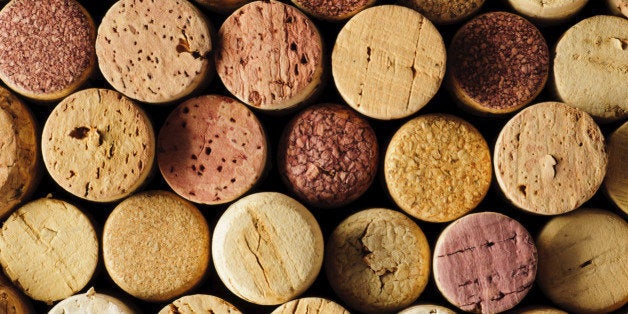
Few topics regarding a bottle of wine generate more impassioned and diverse opinions than the type of closure used. Natural cork is the centuries-old stand-by that has come under relentless attack over the last couple of decades. It has been somewhat replaced with varying rates of success by composite cork (chemically aided fusion of cork pieces), various screw caps, glass and synthetic, (e.g. plastic) stoppers.
But two recent studies by Wine & Spirits magazine of on-premise (restaurant) sales and Nielsen Tracking Surveys for the U.S. retail market point to the rapid growth of cork finished wines in the U.S. with shares of synthetic stoppered and screw cap wines sliding.
Cork closures were seen in 90 percent of Wine & Spirits Top 50 Restaurant Brands, an increase of 21 percent over the past decade while screw caps and synthetics showed decreases of 39 and 70 percent respectively. The Nielsen numbers point out a similar albeit less dramatic trend at U.S. retail.
And according to 100percentcork.org the picture is similar in China. Recent market research found 83 percent of Chinese wine consumers perceived cork as being associated with good quality wine and 84 percent preferred wines sealed with cork.
Why these indicators given all the negative press surrounding cork and plenty of positive commentary on alternate closures over the last two decades? Despite the exponential growth of the wine market, it seems that the alternatives are failing to keep pace with cork's resurgence.
Let's first look at the negative cork arguments and how the alternatives gained such popularity so quickly. For simplicity, we'll consider the U.S. market as alternate closures never caught on in Europe but do "rule the roost" in several New World markets such as New Zealand and Australia where most wines are now bottled with screw caps.
The wine trade and press has expressed concern over "taint" and the fear that a bottle with a cork stopper could be "corked" a term related to the presence of TCA (2,4,6-trichloroanisole). TCA is a chemical compound produced when plant phenols (present in wine grapes) come in contact with chlorine and mold. It strips the wine of its fruit even in low concentrations and effects the bouquet with notes of wet cardboard, soap and other unpleasant characteristics. It is detectable in very small concentration of one or two ppt (parts per trillion) to a trained professional but most consider the threshold at six or eight ppt.
Years ago, the trade estimated cork taint affected 10 to 15 percent of wines. The cork producers pegged the number between three and five percent but vowed to address the problem. This set the stage for the advent of the alternatives and they began to explode in all corners of the market with the greatest preponderance in the lower-end early drinking whites.
The Portuguese and Spanish cork industries reacted to the cork taint problem with a €400 million ($550 million) quality control mission aimed at production and cleanliness. It is generally accepted that the drastic reduction seen by the trade and press in the level of corked wines is a result of these efforts and certainly borne out by the statistics cited above.
The origin of TCA is not confined to the cork, and can be present in the winery as well as by contamination with cleaning solutions and mold on various concrete, wood and plaster surfaces. Cleanliness is important in the winery and no alternate closure will overcome "cellar" taint.
Synthetic closures have pretty much run their course though some improvements are being made. Principle drawbacks are difficulty in removing and replacing the closure along with environmental issues in their production and disposal. And glass stoppers may be more aesthetic than practical.
Screw caps have gained increased acceptance especially with early drinking aromatic whites, but whether they aid or restrict the aging process in more serious reds remains open to speculation. Their relative barrier to air (as opposed to cork) may alter the aging process and can add a "reductive" (sulfur notes) characteristic to some wines.
Alternate closures are gaining acceptance in certain markets and research is on-going by the manufacturers to overcome their inherent shortcomings. But consumers across the US and Europe continue to question why we should scrap the old tradition and romance of a popping cork in favor of alternative closures to protect against a decreasing threat of taint.